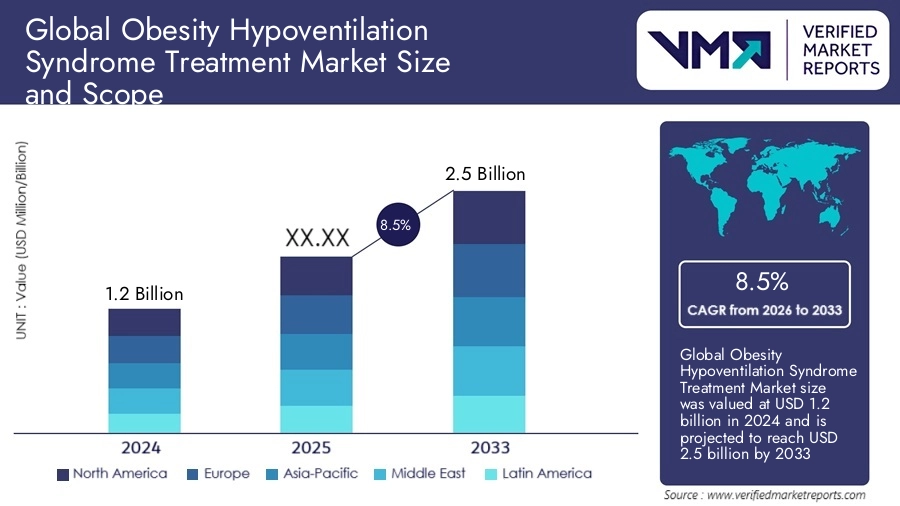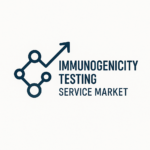Obesity Hypoventilation Syndrome Treatment Market Segmentation
The OHS treatment market can be segmented into four broad categories: Treatment Modality, End User, Distribution Channel, and Region. Each segment has its own subsegments and plays a unique role in shaping the overall market dynamics.
1. By Treatment Modality
The treatment modality segment is the cornerstone of the OHS market as it directly relates to the clinical approach employed to manage the condition. The segment can be subdivided into:
a) Non-Invasive Ventilation (NIV)
This is the primary treatment method for OHS. NIV includes devices like CPAP (Continuous Positive Airway Pressure) and BiPAP (Bilevel Positive Airway Pressure) machines. CPAP is widely used to treat coexisting OSA, while BiPAP is preferred for patients with significant hypercapnia. Technological improvements have made these devices quieter, more comfortable, and equipped with advanced compliance monitoring features. The demand for home-based NIV solutions has surged, driven by patient preference for home care and the growing trend of remote monitoring.
b) Pharmacological Therapies
Although no drugs are specifically approved for OHS, pharmacotherapy targeting obesity management indirectly aids OHS treatment. Subsegments here include anti-obesity medications (such as GLP-1 receptor agonists like semaglutide), appetite suppressants, and adjunctive metabolic modulators. These therapies contribute to weight loss, which reduces respiratory burden and improves ventilation. The pharmaceutical pipeline for obesity management is expanding rapidly, with several novel agents in advanced clinical trials.
c) Surgical Interventions
Bariatric surgery is an option for morbidly obese patients who fail to achieve significant weight loss through lifestyle or pharmacological measures. Procedures like gastric bypass and sleeve gastrectomy have demonstrated positive outcomes in improving hypoventilation by inducing substantial and sustained weight loss. This subsegment continues to gain traction, especially in developed markets with advanced bariatric care infrastructure.
d) Lifestyle and Behavioral Therapy
Behavioral interventions, including dietary counseling, physical activity regimens, and cognitive behavioral therapy, are vital adjuncts in OHS treatment. While these interventions are often delivered in combination with other treatments, their importance in achieving and maintaining weight loss cannot be overstated. Advances in digital health tools, such as mobile apps and virtual coaching, are expanding the reach of lifestyle management programs.
2. By End User
The end-user segment categorizes the market by the types of institutions and stakeholders providing OHS treatment solutions. The key subsegments include:
a) Hospitals and Sleep Clinics
Hospitals, particularly those with specialized pulmonary and sleep medicine departments, are primary settings for diagnosing and managing OHS. Sleep clinics are crucial for conducting polysomnography and titration studies required for appropriate ventilator settings. Advanced hospitals often collaborate with medical device manufacturers to offer integrated care pathways. This subsegment accounts for a significant share of the market due to its infrastructure and access to specialized care.
b) Homecare Settings
The preference for home-based treatment has grown exponentially, especially post-COVID-19. Portable CPAP/BiPAP machines, remote monitoring devices, and telemedicine platforms enable patients to receive effective care at home. This reduces hospital visits, enhances convenience, and lowers costs. The homecare segment is projected to grow at the fastest CAGR within the end-user category, driven by the increasing availability of user-friendly devices and supportive reimbursement policies in some regions.
c) Ambulatory Surgical Centers (ASCs)
ASCs perform outpatient bariatric surgeries and minor procedures related to OHS diagnosis and management. They provide a cost-effective alternative to inpatient hospital care. This subsegment is seeing moderate growth due to rising demand for minimally invasive surgical solutions and shorter recovery times associated with ASCs.
d) Research and Academic Institutes
These centers play a vital role in driving innovation and clinical research. Academic hospitals and research institutes contribute to understanding OHS pathology, developing new treatment protocols, and conducting clinical trials for emerging drugs and devices. While they represent a smaller market share in terms of direct treatment delivery, their influence on long-term market evolution is significant.
3. By Distribution Channel
This segment focuses on how OHS treatment solutions, especially devices and pharmaceuticals, reach end users. Subsegments include:
a) Direct Tenders
Large hospitals and sleep centers often procure medical devices and ventilation systems through direct tenders from manufacturers or authorized distributors. Direct tenders ensure supply chain transparency and favorable pricing for bulk purchases. This channel holds a major share in developed healthcare markets where institutional purchasing power is strong.
b) Retail Pharmacies
Retail pharmacies play an important role in dispensing prescription medications for obesity management and related comorbidities. Increasing adoption of anti-obesity drugs is driving demand in this channel. Many pharmacies also retail CPAP accessories and consumables, adding to their relevance in the market.
c) Online Pharmacies and E-commerce
The rise of online channels has revolutionized the distribution landscape. Patients increasingly prefer ordering CPAP/BiPAP machines, spare parts, masks, and other respiratory supplies online for convenience and competitive pricing. Online pharmacies also cater to the demand for prescription drugs and nutritional supplements. E-commerce channels have witnessed robust growth, especially post-pandemic, and are likely to expand further as digital health adoption increases.
d) Specialty Clinics and Direct-to-Patient Programs
Some manufacturers and sleep clinics offer direct-to-patient sales and rental programs for home ventilation equipment. These models provide patients with customized device configurations, setup support, and ongoing monitoring services. This subsegment aligns well with the broader trend of patient-centric and home-based care models, particularly in urban markets.
4. By Region
Regional segmentation is crucial for understanding market dynamics as the prevalence of obesity, healthcare infrastructure, reimbursement policies, and patient awareness vary greatly across geographies. The four primary regional subsegments are:
a) North America
North America, particularly the U.S., dominates the OHS treatment market due to its high obesity prevalence, advanced healthcare infrastructure, and early adoption of innovative treatment technologies. The presence of leading medical device companies, robust insurance coverage for sleep apnea treatments, and strong clinical research networks further support market growth. Strategic partnerships between hospitals and device manufacturers to provide integrated respiratory care are common in this region.
b) Europe
Europe represents the second-largest market, with significant contributions from countries like Germany, the U.K., and France. The region benefits from well-established sleep medicine practices and favorable reimbursement frameworks for NIV devices and bariatric surgeries. Increasing government initiatives to combat obesity and promote healthy lifestyles are driving early diagnosis and treatment uptake.
c) Asia-Pacific
The Asia-Pacific region is expected to witness the fastest growth over the forecast period. Rising urbanization, changing dietary patterns, and sedentary lifestyles are contributing to increasing obesity rates in countries such as China, India, and Australia. However, awareness about OHS remains low, and diagnosis is still limited in many parts of the region. Rapid improvements in healthcare infrastructure, growing medical tourism, and increasing penetration of global medical device companies are likely to drive future market expansion.
d) Rest of the World (RoW)
This segment includes Latin America, the Middle East, and Africa. While the prevalence of obesity is growing, healthcare access for OHS remains limited due to low awareness, lack of specialized facilities, and inadequate reimbursement. Nonetheless, market players see emerging opportunities, particularly in urban centers where rising disposable incomes and lifestyle changes are leading to higher obesity rates. Investments in telemedicine and mobile health solutions are helping bridge gaps in diagnosis and care delivery in these regions.
Conclusion
The Obesity Hypoventilation Syndrome Treatment Market is evolving rapidly under the influence of rising obesity prevalence, technological advancements, and increased awareness of sleep-related breathing disorders. Market growth will be shaped by continued innovation in non-invasive ventilation, expansion of homecare solutions, progress in anti-obesity pharmaceuticals, and the integration of digital health tools for remote monitoring and patient engagement.
However, overcoming barriers such as high treatment costs, insurance gaps, and patient adherence will be critical for realizing the market’s full potential. Companies that focus on patient-centric solutions, strategic collaborations, and regional expansion in underpenetrated markets will likely gain a competitive edge in the years ahead.
With its blend of clinical need, technological opportunity, and growing patient awareness, the OHS treatment market promises to be an area of significant healthcare impact and business opportunity over the next decade.


